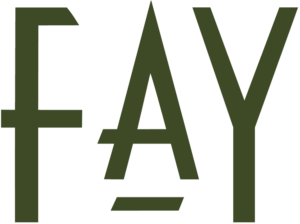An Overview Of Texas Crop Production
For the farmers, ranchers, and investors out there who are interested in purchasing property in the Lone Star State, knowledge of crop production and market trends of that production plays an important factor in judging what land to buy and where. Landowners are dealing with a greater number of issues in the 21st century than ever before. From new laws to the difference between traditional and non-traditional agricultural outputs to the state of the American economic community, landowners are faced with more than a few questions in regard to what their farm or ranch needs in order to be a success.
It is important to note that crop production in Texas is actually less than 40 percent of the total value of the state’s agricultural output. But, when it comes to the crops bringing in the most money for farmers, cotton, grain sorghum, corn, and wheat actually account for a majority of the total crop receipts. That is not to say that hay, vegetables, rice, peanuts, and others should not also be researched. When looking into purchasing land and making the most successful
farm possible in Texas, it is important to head into the industry with eyes wide open, having a clear understanding of the crops themselves as well as the soil additives, water management, wildlife management and other factors that come along with the purchase.
TEXAS COTTON FIELD
For over a century, cotton has been synonymous with Texas crops. In fact, since around 1880, Texas has been responsible for producing the most cotton, with today’s numbers
being approximately one-quarter of the entire cotton production in the United States. Since cotton is the material necessary to operate oil mills, some textile mills, gins, and compresses, Texas cotton is machine harvested, with most of the crop being exported overseas. And, with continuing
improvements in technology, the demand for the export of Texas cotton continues to grow.
For those interested in corn crops, yields have improved greatly for decades, considering the new varieties being produced. Grain sorghum, again, is a crop mostly exported in addition to being used in livestock and poultry feed throughout the state. The demand for corn has reached even higher proportions because of ethanol production.
Moving on to Texas wheat, farmers should note that this has become one of the most valuable cash crops over time. Wheat pastures are also utilized to improve the value of the landowner’s cattle, considering it provides the perfect amount of winter forage for the livestock being managed.
The area near Sherman, Texas, can claim the first wheat crop production, eventually becoming more extensive, moving farther and wider into North-Central Texas as farmers and ranchers increased settlements. At present day, almost half of the state’s wheat acreage is found in the high plains area, with about a third being irrigated. And with the constant discovery and development of new and improved varieties that offer far more disease resistance, these crops have expanded into other Texas areas.
One more thing that is important for farmers to note is the fact that the production of nursery crops is also expanding, which means foliage plants, sod, landscape, and bedding plants are in demand. Texas A&M AgriLife Extension specialists have shown an increase in figures when it
comes to Texas nursery crop growth in size and value. After all, improving landscapes indoors is just as desirable as rejuvenating habitats outdoors.
In the end, data necessary for the landowner to be successful comes from skilled and experienced people in the industry. For buyers and sellers in the states of Oklahoma and Texas, those experienced minds make up the team of Republic Ranches, LLC.

Discover the Charm and Opportunities of North Dakota
Are you considering a move but unsure where to settle? North Dakota, often overlooked by travelers and potential residents alike, offers a wealth of opportunities and a lifestyle to suit a variety of preferences. Whether you’re drawn to outdoor adventures, a slower pace of life, or expanding career opportunities, this charming state has something to […]

Easement Dispute – Ask an Agent
Dear Land Expert, I am preparing to list my Western ranch soon; however, my neighbor is currently contesting an easement that crosses a corner of their property, an access route I’ve used consistently and that has been essential for reaching certain parts of my land. While I’ve always understood this to be a valid easement, […]



